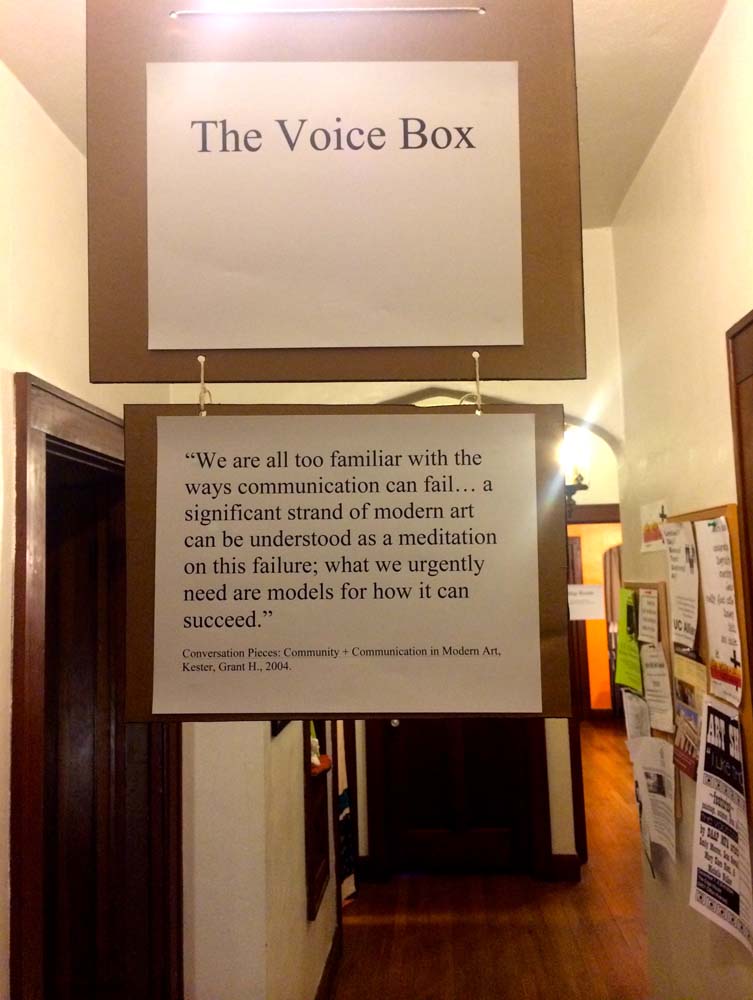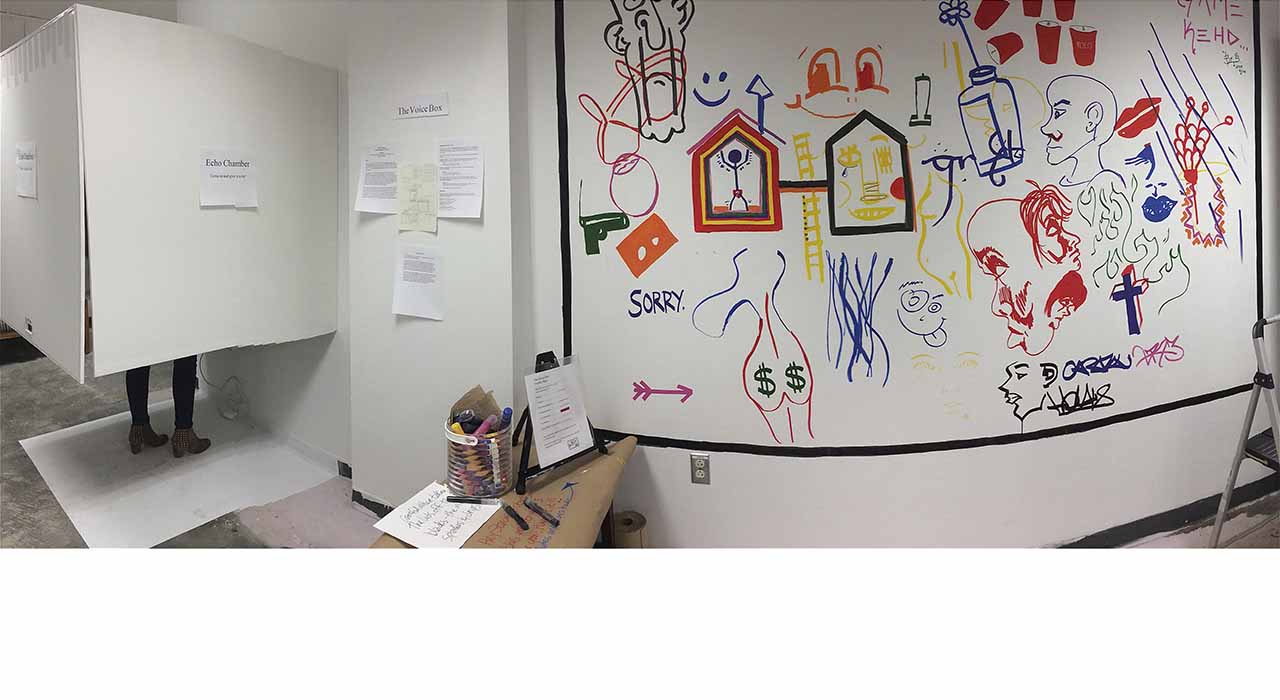The Voice Box
Including:
Echo Chamber, One and One Booth, Community Room, and Graffiti Maps
The Voice Box is intended to provide aesthetically pleasing and comfortable physical spaces where carefully shaped human interactions offer participants opportunities to experience “Voice” – their own, and others’ – in an atmosphere that balances risk, quality listening, equality, and support.
The intention is to conduct a social experiment by creating a sort of Utopian prototype that offers opportunities to express, receive and support voiced ideas, feelings, and experiences. The Voice Box conveys something both symbolic and real: symbolic, in that the concept alone critiques the forces that create feelings of isolation and shrinking of self that we experience when we don’t express ourselves or feel heard; real in that it offers an experiential antidote to these things, via self-reflection, physical presence, and deep listening.
By implicitly asking the question “What if everybody did?” The Voice Box suggests the possibility of extending the experience into daily life, based on the idealistic assumption that authentic voice met by quality listening and supportive response in an atmosphere of equality are what are needed for 1. individuals to make their optimum unique positive contribution to the world through work or other self-expression; 2. healthy, satisfying personal relationships; and 3. authentic, effective democracy.
Experiential & Physical Aesthetics
The Voice Box is envisioned to be a process first and foremost; eventually a physical space, or set of spaces, may be designed and built. Both process and place are meant to be portable, and adaptable, to a variety of situations.
The Echo Chamber – a room with a digital audio feedback system that allows people to voice themselves and hear an exact echo, in their own voice, of what they have to say.
The One and One Booth – where two people can take turns voicing themselves, and listening.
The Community Room – a place where 4 to 6 people can gather to engage in an equitable process of saying something important to them, listening, inquiry, and mutual support.
Experiments
Experimenting with any/all of the following could be done as ways of exploring optimum conditions for supporting individuals to voice their best selves in contexts of creative life, work, relationships, and community:
random participation vs. invitation;
turning “on” or “off” different chambers;
casual questions vs. focused and intense;
screen or not in One and One Booth;
shared activities while talking v. only talking;
mapping the conversations;
use of silence;
ways to minimize power differentials;
role of the artist as facilitator vs. participant; and
specific topics v. more open prompts.
2013

